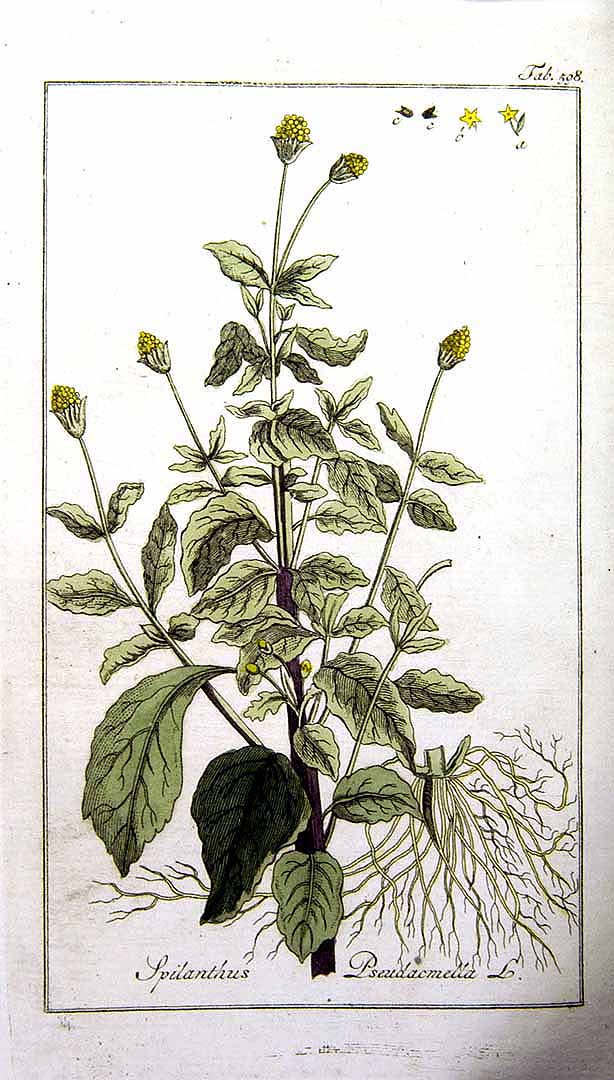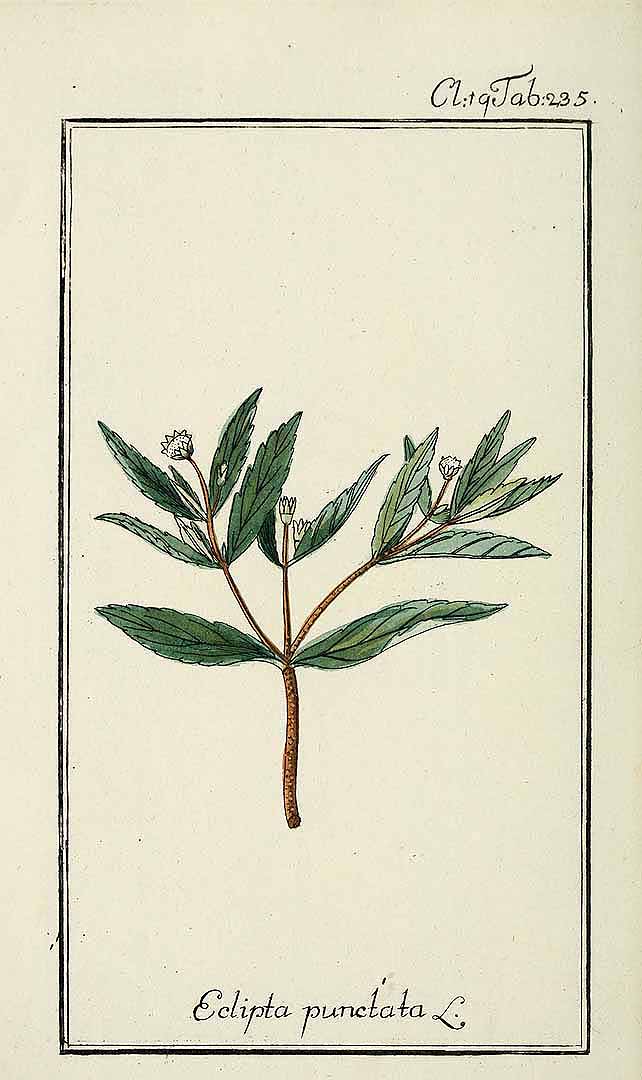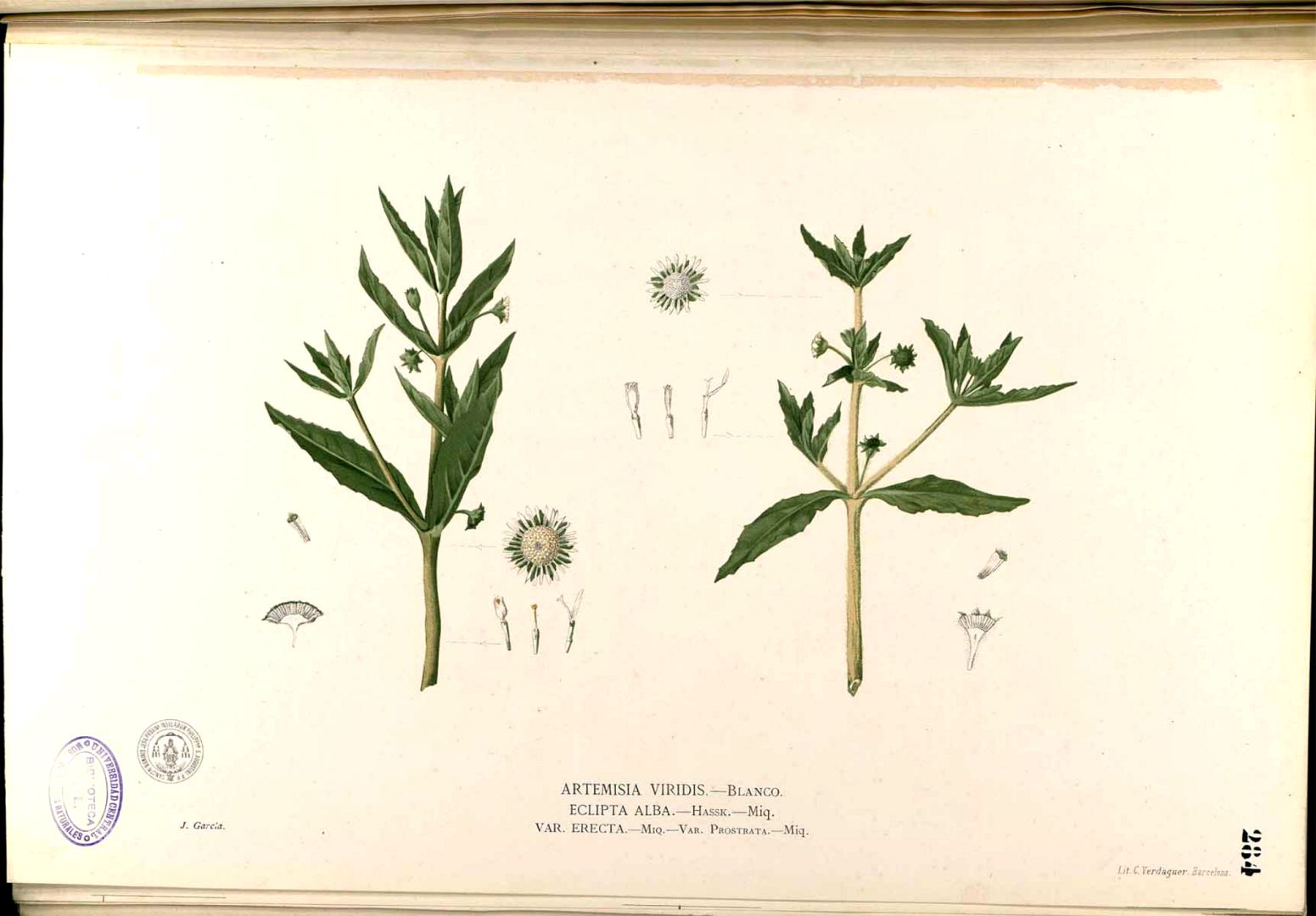! Nouveau site ici !
Vita > Plantae > Magnoliophyta > Magnoliopsida > Asterales >
Asteraceae > Eclipta
Eclipta prostrata
(Éclipte blanche)

 | * - ***
| * - ***
Vita > Plantae > Magnoliophyta > Magnoliopsida > Asterales >
Asteraceae > Eclipta
Eclipta prostrata
(Éclipte blanche)

Une petite plante herbacée qui pousse d'année en année. Il se courbe vers le haut le long du sol et forme des racines aux nœuds. Il mesure 30 à 60 cm de hauteur. Les feuilles sont en forme d'épée et velu... (traduction automatique)
→suite
⬀
Le  donne accès au menu
donne accès au menu (c'est votre point de repère) 😊 ;
En dessous vous avez la classification, à partir de la vie (Vita, premier rang) jusqu'à la classe au dessus de la plante, dont vous trouvez ensuite le nom scientifique/botanique (latin) puis le nom commun (français), le cas échéant ;
C'est aussi un lien vers la fiche complète (tout comme la ✖, en bas à droite, et le +, en dessous de la description) ;
Vient alors l'illustration (ou ce qui la remplace, en attendant), la comestibilité :
Et en bas
⬂







